Intel's Ivy Bridge: An HTPC Perspective
by Ganesh T S on April 23, 2012 12:01 PM EST- Posted in
- Home Theater
- Intel
- HTPC
- Ivy Bridge
We briefly looked at the various knobs available in the graphics control panel in the previous section. In this section, we will take a look at some of those knobs in action. In our piece on discrete HTPC GPUs, we had explained clearly about the basics of cadence detection and why it is necessary. We had also included a gallery with screenshots of various GPUs playing back the Spears & Munsil Wedge Pattern. The 2:3:2:3 cadence is undoubtedly the most common pattern. The pictures below show the effect of the film mode detection knob on the wedge pattern clip. If you refer back to the gallery, you will find that all GPUs other than the GT 430 had trouble with properly identifying the cadence and performing deinterlacing appropriately. The Intel HD Graphics 4000 has no trouble with this clip.
Deinterlacing works as expected in PowerDVD and also EVR-CP / madVR (which implement DXVA2 deinterlacing).
For reference, a screenshot of the non-deinterlaced version can be found as the penultimate picture here.
The quality of chroma upsampling differs from GPU to GPU, and even within the same GPU, it depends on the driver version. It is generally accepted that madVR provides one of the best upsampling algorithm implementations for rendering purposes. In fact, the end-user has the ability to opt for an upsampling algorithm of his choice. We took the HQV clip for testing chroma upsampling, and played it in both PowerDVD as well as MPC-HC with madVR. The two screenshots below show the magnified view of a particular area in the clip. The madVR quality is visibly better, but the PowerDVD version is no slouch either. There is almost no colour bleeding or any other artifacts similar to what we saw in the AMD 7750 review. The full screenshots are available here (madVR) and here (PowerDVD).
PowerDVD Chroma Upsampling
madVR Chroma Upsampling (Default Algorithm)
One of the interesting aspects of the noise reduction knob is the fact that we have separate controls for luma / luma and chroma. The gallery below has the feature in action.
Adaptive contrast enhancement works as advertised, enabling HD 4000 to comfortably score the maximum possible points in that section of the HQV benchmark.


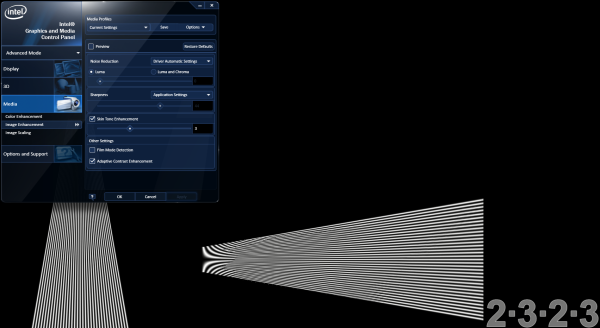
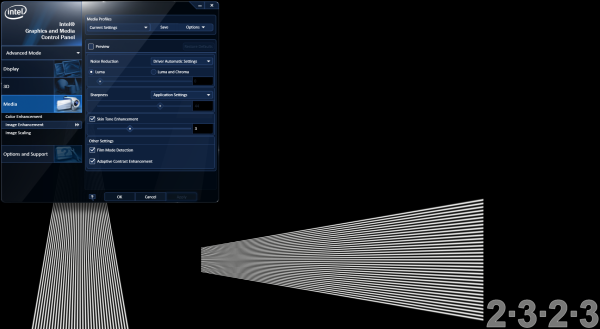
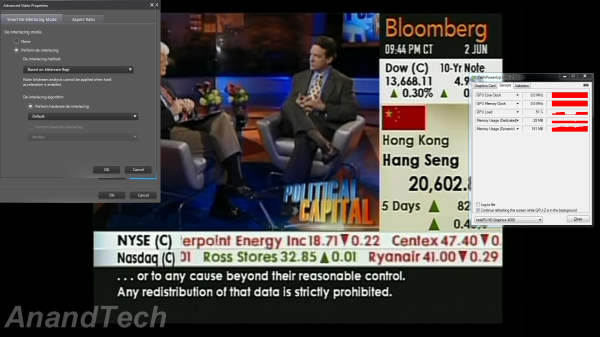
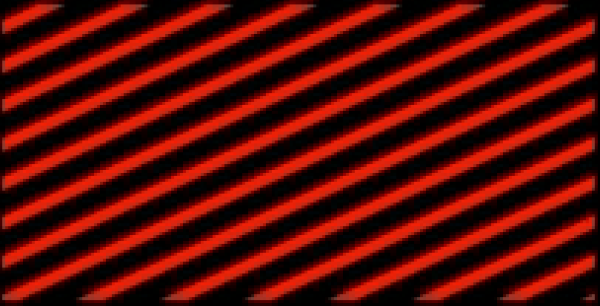
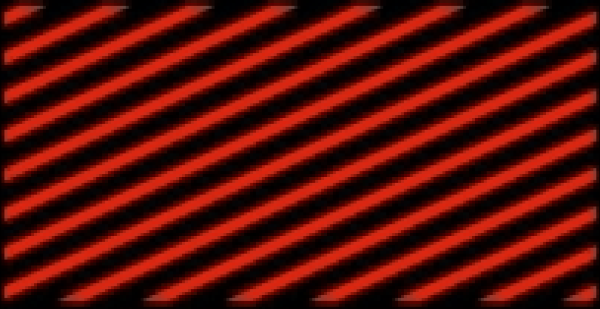




















70 Comments
View All Comments
ganeshts - Tuesday, April 24, 2012 - link
The FSE mode performed visibly worse for me compared to FSW in the few cases that I tried. I have got the rest of the settings that Andrew @ MR used. I may try it and see if it improves things. My aim was to get madVR to render without any dropped frames, and I was able to get that at DDR3-1600 (which is what Andrew used too) for almost all the clips I had (except 720p60, which I didn't try till yesterday).satish0072001 - Tuesday, April 24, 2012 - link
Video decoding and rendering benchmarksCan you provide the learning guide how you've got those scores? It will be very helpful for some of us... I know about hqv score.. but this one is new to me.. kindly help :)
From where can I get these benchmarks if i have to compare my existing system with the IVB results?
LuckyKnight - Tuesday, April 24, 2012 - link
In the article there is a promise of a BIOS update to fix the 23.97Hz issue. Wasn't something similar also promised for sandy bridge in the same article over a year ago!! That never happened did it. I want to build a HTPC already!ganeshts - Tuesday, April 24, 2012 - link
Well, something did happen with SNB.. they got it to 23.972 Hz :) If you think about it, video cards with AMD and NVIDIA GPUs also end up in the 23.974 - 23.978 range, and only very rarely do I actually see a GPU outputting exactly 23.976023976 Hz.If Intel gets between 23.974 - 23.978 in a stable manner, I will consider the matter closed.
Shaggie - Thursday, April 26, 2012 - link
Is there still the problem like with SB that the driver puts color space to limited range when connecting to the tv with HDMI and resets it with every refresh rate switch/reboot with the integrated graphics?Stabgotham - Monday, April 30, 2012 - link
Is there a point to getting an H77 board with Ivy Bridge if all you are using it for is as an HTPC (sans overclock)? I can't tell what the benefit would be to justify the price increase.crisliv - Wednesday, June 13, 2012 - link
Nice article! As always.About the note:
"The good news is that Intel is claiming that this issue is fully resolved in the latest production BIOS on their motherboard. This means that BIOS updates to the current boards from other manufacturers should also get the fix. Hopefully, we should be able to independently test and confirm this soon."
What does it mean exactly? Does it mean that this BIOS update should get refresh rate closer to the 23.976 than it was in your test? And "on their motherboard" - does it mean that this BIOS update is for Intel MB only?
True that in AMD and nVidia the out of the box refresh rate for 23 is never precisely 23.976, but the custom timings on nVidia allows you to get closer to is. There is no custom timing settings on the HD4000, right?
LuckyKnight - Thursday, June 14, 2012 - link
Do we have an update regarding 23.967hz?theboyknowsclass - Tuesday, July 24, 2012 - link
it's been a while, and couldn't find any follow upHdale85 - Thursday, August 23, 2012 - link
I've been looking at an Ivy Bridge setup with the H77/Z77 chipset but I can't find any information about the audio support? Can it bitstream TrueHD and DTS-HD tracks? The older chipsets do it so I would find it strange that the new ones don't, but I don't see it mentioned on any of the new boards or in the intel information.